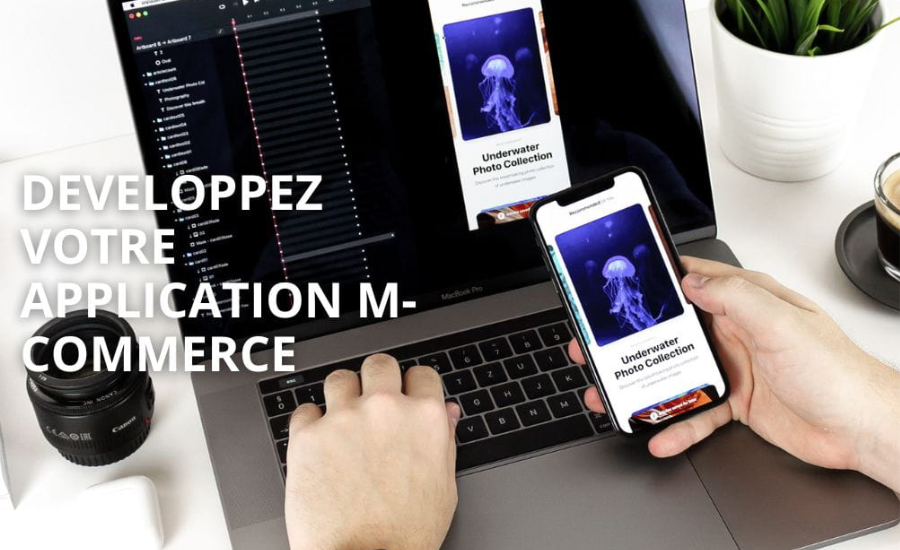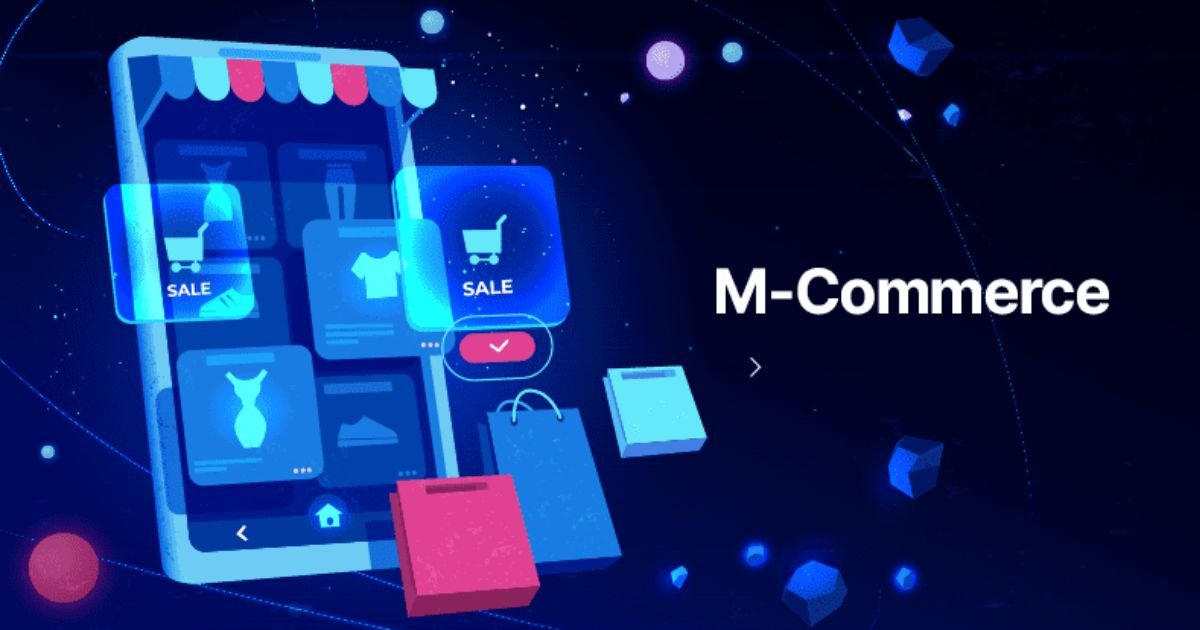Developpez Votre Application M-Commerce Complete information
Introduction
In the fast-evolving digital world, having an m-commerce application is no longer a luxury—it’s a necessity. As mobile usage continues to soar, businesses must meet their customers where they are: on smartphones and tablets. The first step to successfully developpez votre application m-commerce is identifying the core features and tools needed to offer users a seamless experience. From fast loading times and high security to a smooth user interface, these elements are crucial to the app’s success. Additionally, if you’re targeting specific markets, such as Spanish-speaking users, integrating a clear CTA in their language can significantly enhance engagement and retention. Optimizing these aspects of your m-commerce app will ensure long-term success in this competitive space.
Understanding M-Commerce
Definition of M-Commerce

Mobile commerce, commonly known as m-commerce, refers to the buying and selling of goods and services through mobile devices like smartphones and tablets. It includes various activities such as mobile banking, in-app purchases, mobile ticketing, and mobile payments. Essentially, m-commerce is an optimized version of e-commerce that caters specifically to mobile device users.
Differences Between E-Commerce and M-Commerce
The primary difference between e-commerce and m-commerce lies in the platform. E-commerce encompasses online transactions conducted through any internet-enabled device, while m-commerce is designed specifically for mobile devices. This distinction is crucial as m-commerce apps need to be optimized for smaller screens, touch interfaces, and mobile-specific features such as location-based services and mobile payment options.
Benefits of M-Commerce Applications
Convenience and Accessibility
The biggest advantage of m-commerce apps is their convenience. Customers can shop anytime, anywhere, with just their smartphones. This ease of access improves user satisfaction and often leads to higher sales.
Personalization and User Experience
M-commerce applications offer personalized shopping experiences by analyzing user behavior. With features like tailored product recommendations, personalized notifications, and exclusive deals, these apps elevate the user experience to a new level.
Enhanced Customer Engagement
M-commerce apps help maintain strong customer engagement through tools like push notifications, loyalty programs, and in-app messages. These features keep users returning, fostering loyalty and repeat purchases.
Planning Your M-Commerce App
Identifying Your Target Audience
Before you developpez votre application m-commerce, it’s essential to know your target audience. Understanding their preferences, shopping habits, and pain points will allow you to design an app that meets their specific needs. For example, if you’re targeting a younger demographic, integrating social commerce and streamlined checkout features will enhance the user experience.
Defining Core Features
Your app’s success depends on the essential features it offers. These could include a product catalog, search functionality, secure payment methods, order tracking, and customer support. When you developpez votre application m-commerce, prioritize features that meet user needs while aligning with your business goals.
Competitor Analysis of developpez votre application m-commerce
Analyze what your competitors are doing well and where they fall short. This will allow you to offer something unique that gives your app an edge. By understanding what’s working in the market, you can better tailor your app to stand out.
Choosing the Right Platform
Native vs. Cross-Platform Development
When you’re ready to developpez votre application m-commerce, you’ll need to choose between native and cross-platform development. Native apps, developed specifically for iOS or Android, offer better performance and a more tailored user experience. However, cross-platform apps are developed to work on multiple platforms at once, saving time and resources but often compromising slightly on performance.
Pros and Cons of Each Platform
- Native Development: Superior performance, better integration with device features, and more reliability. However, it’s more time-intensive and expensive.
- Cross-Platform Development: Faster development, lower costs, and a broader audience reach. On the downside, it may not perform as well as native apps and can struggle with certain device-specific features.
Designing the User Interface (UI)
Importance of a User-Friendly Interface
A clean, intuitive user interface (UI) is vital for the success of any m-commerce app. A poorly designed UI can frustrate users, causing them to abandon the app. To developpez votre application m-commerce effectively, prioritize a streamlined design that enhances ease of use.
Key Design Principles for M-Commerce
- Simplicity: Keep the design clean and easy to navigate.
- Consistency: Ensure a uniform design throughout the app.
- Accessibility: Design for all users, including those with disabilities.
- Feedback: Provide immediate feedback for user interactions.
Examples of Effective M-Commerce Designs
Apps like Amazon, eBay, and Alibaba have simple yet effective designs that facilitate easy navigation and provide an engaging user interface. These examples can serve as valuable models when you developpez votre application m-commerce.
Ensuring a Seamless User Experience (UX)
Navigation and Ease of Use
Your app’s navigation must be intuitive, with clear menus and simple processes. Users should be able to easily find products and complete transactions without encountering unnecessary steps or complications.
Load Times and Performance
Performance is a crucial factor in keeping users on your app. If your app loads slowly or struggles to process transactions, users will leave. Ensure that when you developpez votre application m-commerce, it is optimized for fast load times and smooth transitions between screens.
Mobile Payment Integrations
Secure, efficient payment options are a must. Popular mobile payment methods like Apple Pay, Google Wallet, and PayPal should be integrated to streamline the checkout process.
Security Measures
Importance of Security in M-Commerce
With sensitive customer data being handled through m-commerce apps, security must be a top priority. Customers need to feel confident that their information is protected.
Implementing Secure Payment Gateways
Ensure your app is equipped with secure payment gateways. Choose reputable providers that encrypt all transaction data and comply with security standards such as PCI DSS.
Data Protection and Privacy Policies
Implement strong data protection measures and clearly communicate privacy policies to your users. Compliance with regulations like GDPR will help build trust.
Developing Your M-Commerce App
Choosing the Right Development Team
The development team you choose will be key to the app’s success. Look for a team with a proven track record in m-commerce development and expertise in relevant technologies.
Agile Development Methodologies
Adopting agile methodologies allows for flexibility during development, enabling you to incorporate feedback and make improvements on the go.
Testing and Debugging
Thorough testing is essential to avoid bugs and usability issues. Regular updates will also ensure the app continues to perform well after launch.
Integrating Payment Solutions
Ensure that your app accepts popular mobile payment methods, making the transaction process quick, easy, and secure.
Marketing Your M-Commerce App
Pre-Launch Marketing
Begin marketing your app before it’s released. Build anticipation through social media campaigns, email newsletters, and teaser content. This will help to generate buzz and attract users right from launch.
Post-Launch Promotion
After the app’s release, focus on user acquisition through targeted advertising and influencer partnerships. Encourage satisfied users to leave positive reviews and refer others.
Utilizing Social Media and Influencers
Leverage the power of social media and influencers to expand your app’s reach. A well-crafted social media strategy can drive significant traffic to your app.
Analyzing User Data
Importance of Analytics
Use analytics to track user behavior and optimize your app accordingly. Monitoring metrics such as user engagement, conversion rates, and retention will help improve performance.
Tools for Tracking Behavior
Tools like Google Analytics and Firebase can offer valuable insights into user interactions. Use this data to improve your app continuously.
Scaling Your M-Commerce App
As your user base grows, ensure your app can handle increased traffic by optimizing for scalability.
Case Studies
Analyzing successful apps like Amazon and Alibaba can provide lessons on building a winning m-commerce app.
Conclusion
To developpez votre application m-commerce successfully, you need to prioritize seamless user experience, security, and personalization. By following this guide, you’ll be well-positioned to create an app that stands out in the competitive m-commerce landscape and drives long-term growth for your business.
FAQs
- What is m-commerce?
M-commerce refers to the buying and selling of products and services via mobile devices like smartphones and tablets. - How much does it cost to develop an m-commerce app?
The cost varies based on app complexity and features, ranging from a few thousand to several hundred thousand dollars. - What are the key features of a successful m-commerce app?
Core features include a user-friendly interface, secure payments, personalized recommendations, and robust customer support. - How can I ensure my m-commerce app is secure?
Use reputable payment gateways, implement data encryption, and regularly update your security measures to comply with industry standards. - What are the best marketing strategies for m-commerce apps?
Pre-launch campaigns, social media promotion, influencer collaborations, and targeted advertising are highly effective strategies. Read more
